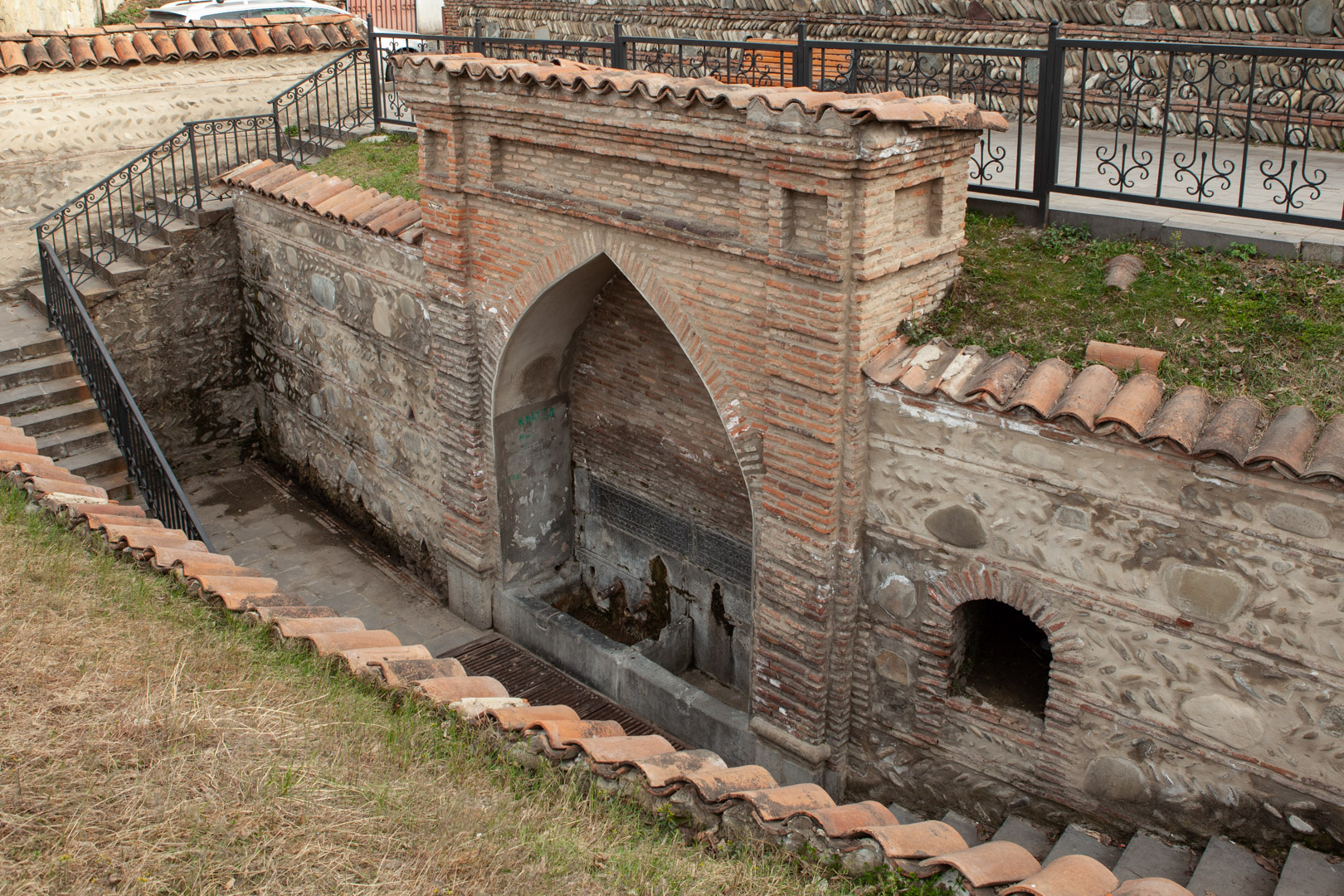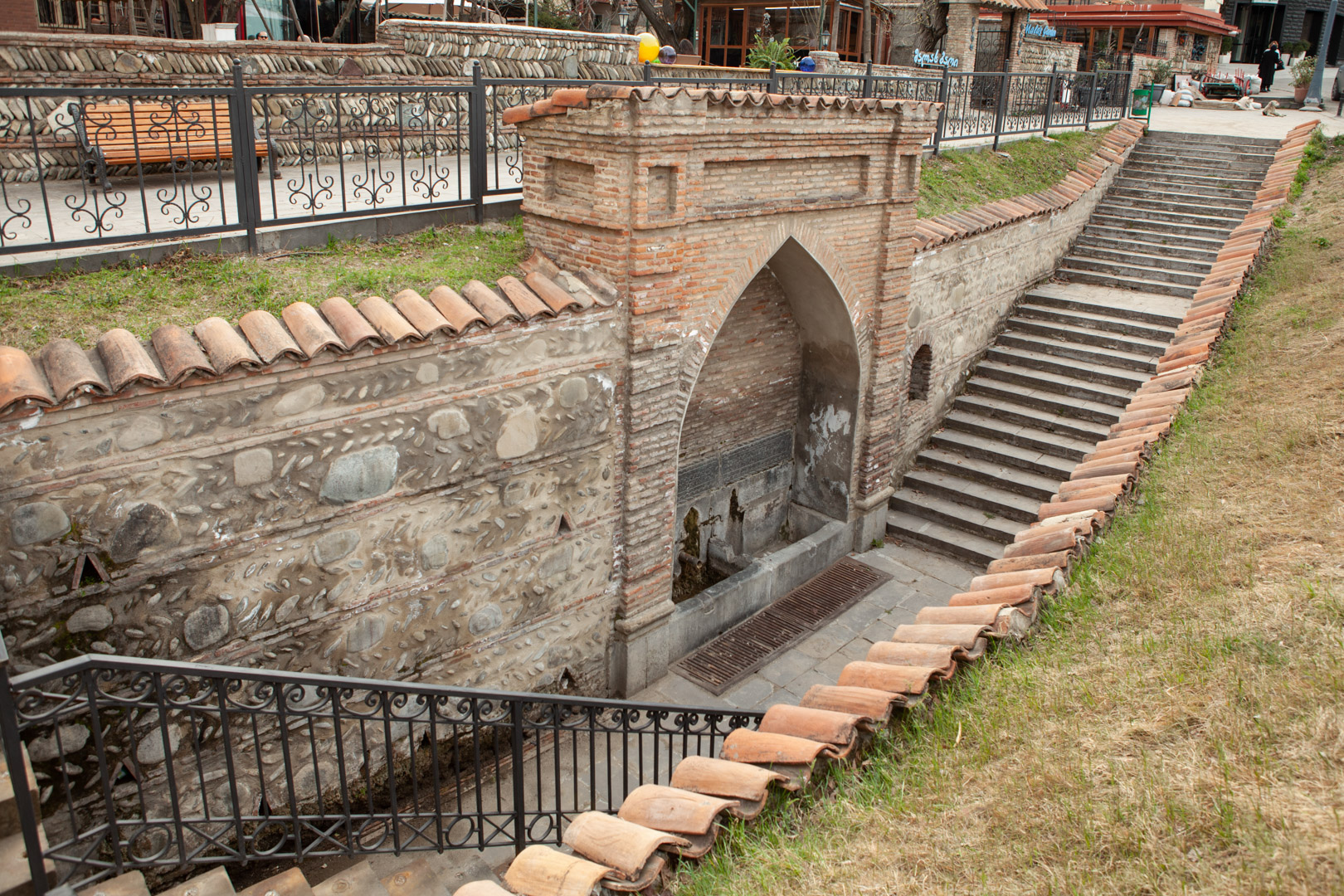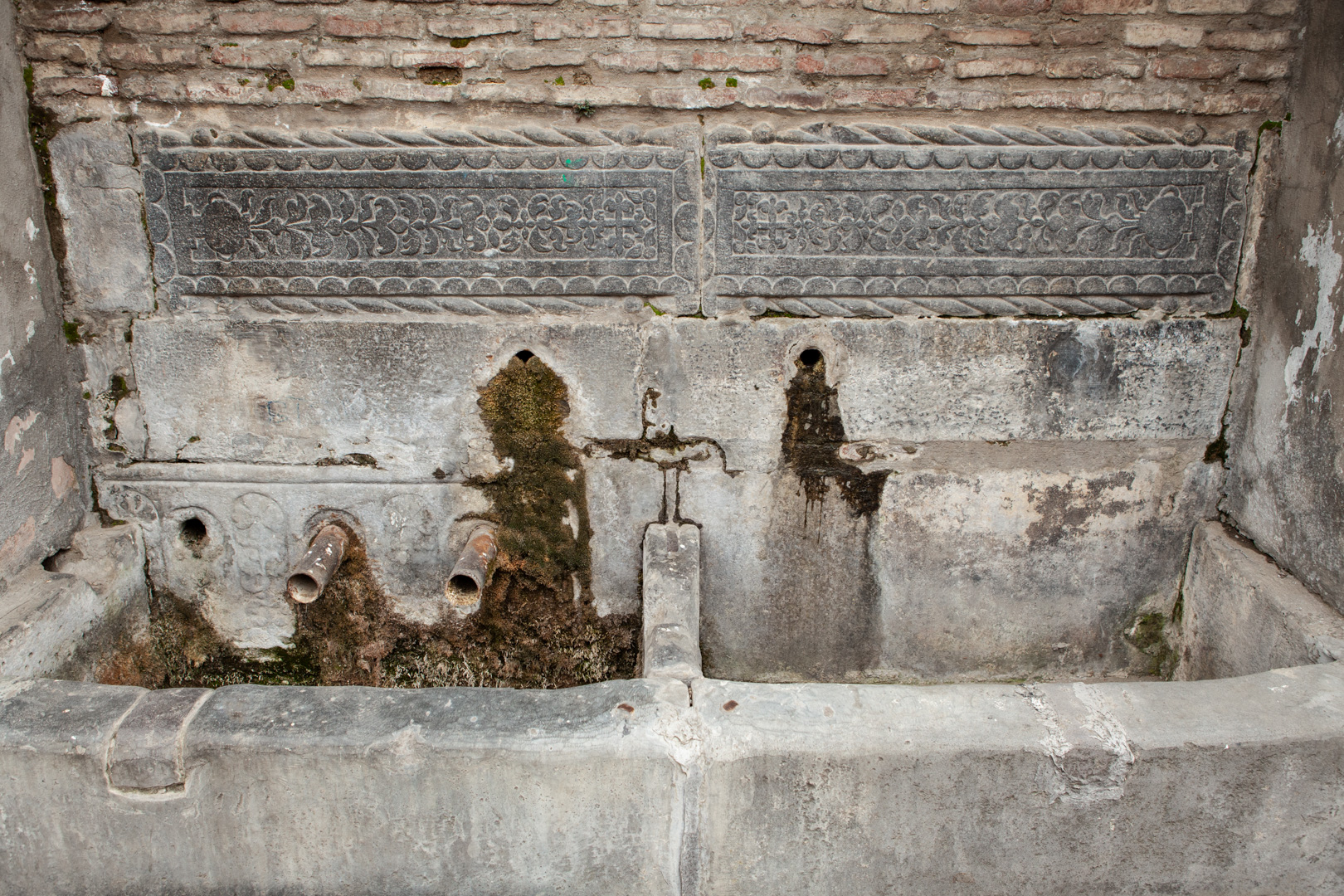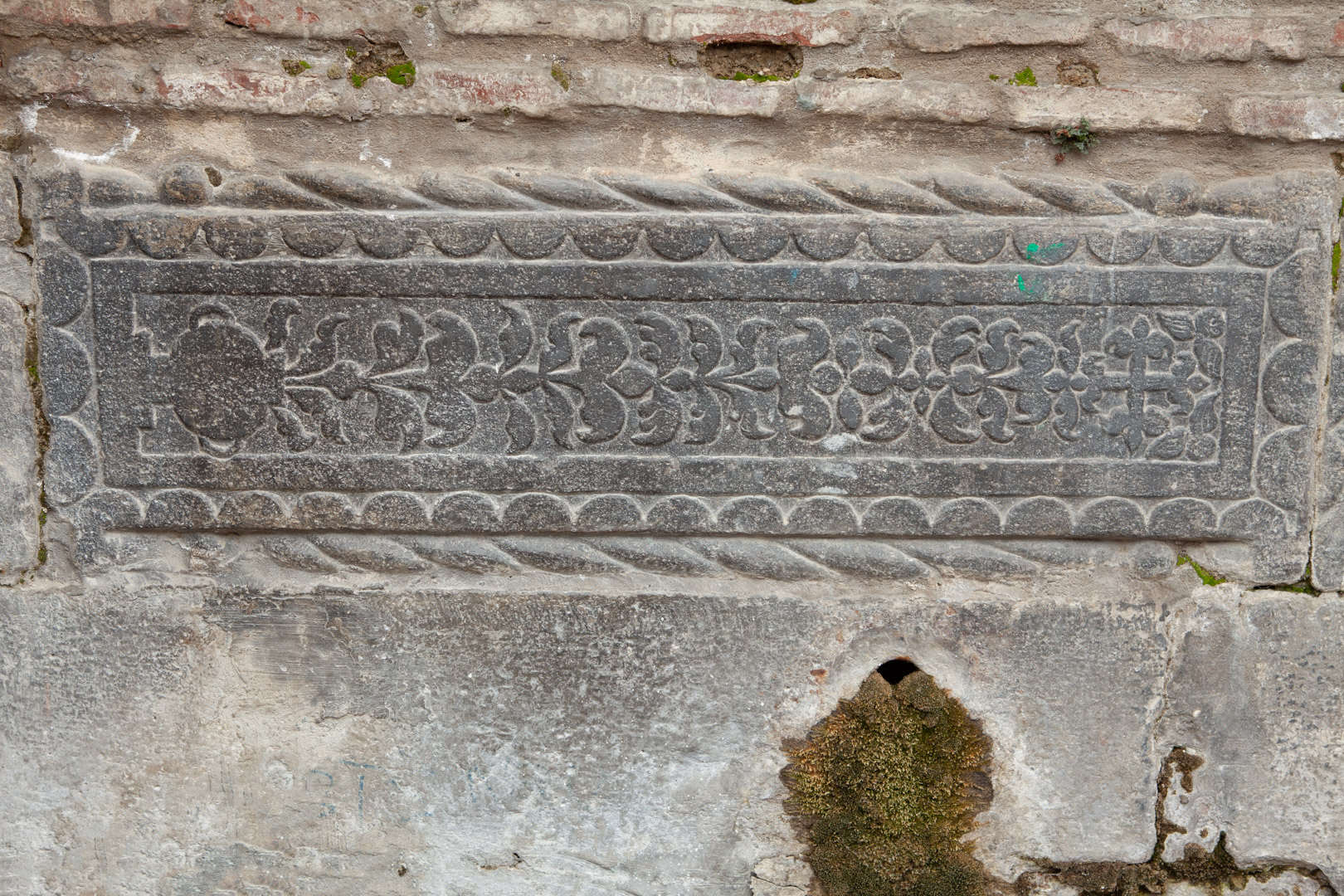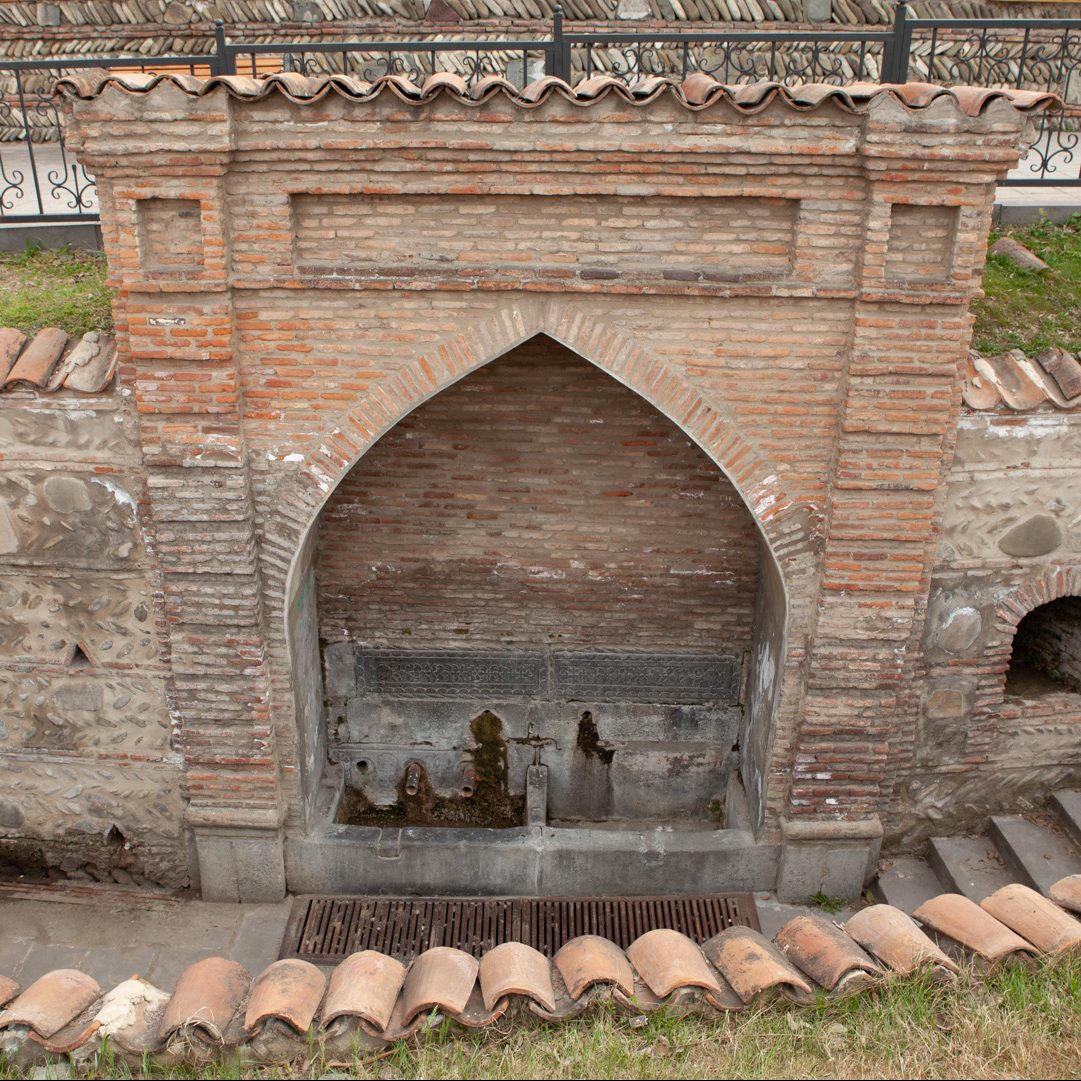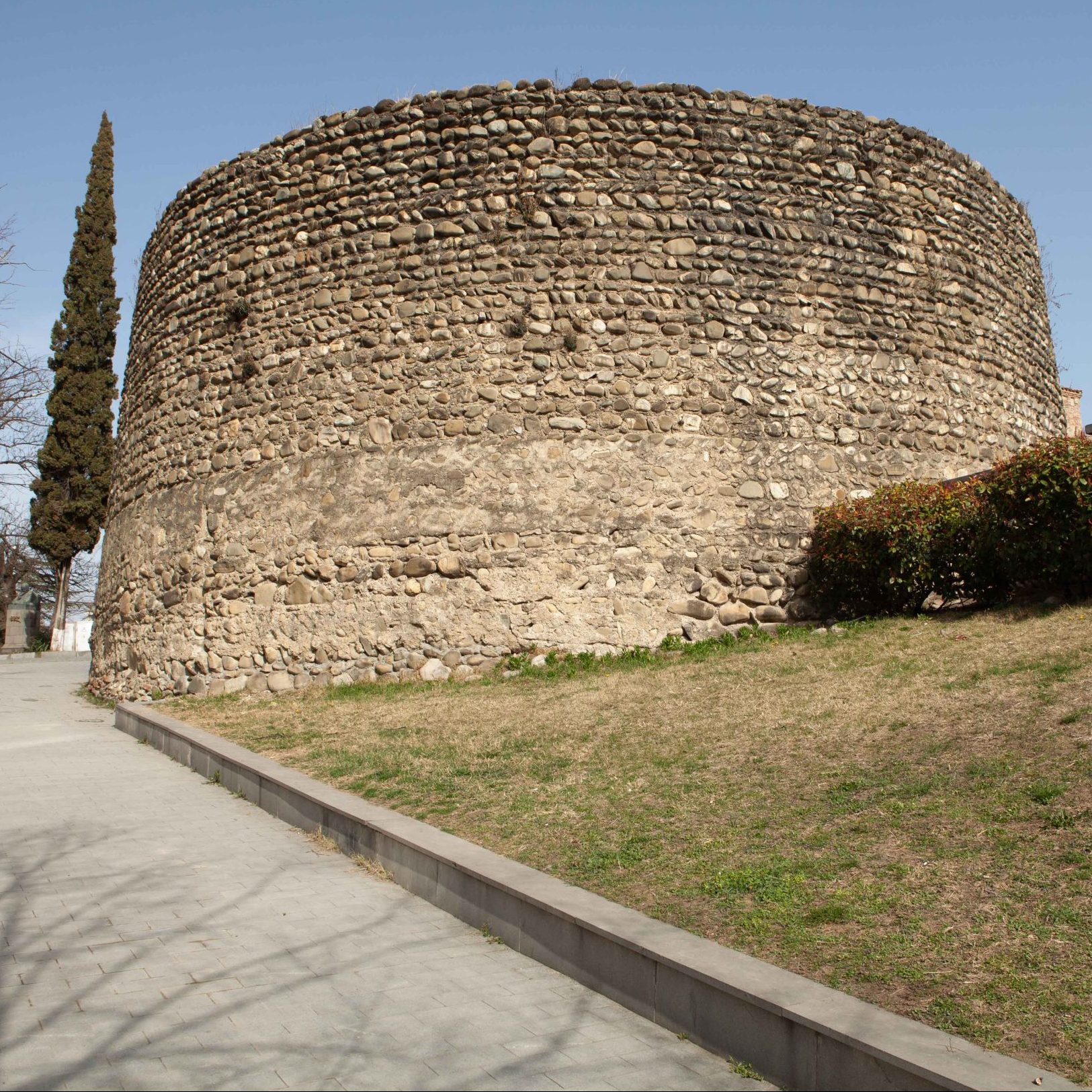ბატონის წყალი ერთ-ერთი ღირსშესანიშნავი ადგილია თელავში. ეს წყალი გამოყვანილია ვახვახიშვილების გორიდან და სატავეს იღებს მოსიაშვილების საცხოვრებელი ადგილიდან. ბატონის წყალი ერეკლე მეფეს ძალიან უყვარდა. 1961 წელს წყალი აღადგინეს და დაუბრუნეს პირვანდელი სახე, როგორიც მე-18, მე-19 საუკუნეში იყო. ბატონის წყლის პირდაპირ იყო საზარბაზნე ბურჯი, რომელიც დარეჯან დედოფალმა სპეციალურად ააშენებინა. აქ მე-19 საუკუნის ბოლომდე იდგა ზარბაზანი, რომელიც ყოველთვის მზად იყო მტრის შემოსევას გამკლავებოდა. წყლის მარჯვენა მხარეს დგას ჭადარი, რომელიც 900 წელზე მეტს ითვლის. თელავში სტუმარი რომ მოდიოდა, მის ქვეშ უშლიდნენ სუფრას. ჭადრის ქვეშ უსადილიათ ცნობილ ქართველ მწერლებსა და პოეტებს: ილია ჭავჭავაძეს, აკაკი წერეთელს და ვაჟა-ფშაველას.
მე-17 საუკუნის წყარო ნაგებია ქართული აგურისა და რიყის ქვის მასალით კირის დუღაბზე, გადახურულია კრამიტით. არქიტექტურულ-მხატვრული გადაწყვეტით მოცემული მცირე არქიტექტურული ფორმა ენათესავება მე-17-მე-18 საუკუნეების თელავურ კარიბჭეებს. წყარო ერთ-ერთია იმ მცირე არქიტექტურულ ფორმათაგან, რომელიც თელავის ისტორიულ ქსოვილშია გაბნეული და ქალაქის შუასაუკუნეობრივი ყოფის შემადგენელია. ამდენად, წყაროს აქვს, როგორც მხატვრულ-არქიტექტურული ღირებულება, ისე ეთნოგრაფიული და ისტორიული მნიშვნელობა.
| Batonis Tskali is one of the most remarkable places in Telavi. This water is laid from Vakhvakhishvili hill and originates from Mosiashvilebi place of residence. The King Erekle loved Batonis Tskali very much. In 1961, the water was restored and returned to its original appearance, as it was in the 18th and 19th centuries. Opposite the Batonis Tskali stood a cannon-tower specially built at the behest of the Queen Darejan. Here until the end of the 19th century stood the cannon that was always ready to resist the invasion of the enemy. To the right of the water is a plane tree that is over 900 years old. When a guest came to Telavi, they set the table under the tree. Famous Georgian writers and poets Ilia Chavchavadze, Akaki Tsereteli and Vazha-Pshavela used to have dinner under the plane tree. The spring of the 17th century was built of Georgian bricks and cobblestones on lime mortar, covered with tiles. The small architectural form, given by the architectural and artistic solution, is related to the Telavi Gates of the 17th-18th centuries. The spring is one of the small architectural forms of Telavi and is part of the medieval life of the city. Thus, the spring has both artistic and architectural value, and ethnographic and historical significance. |
